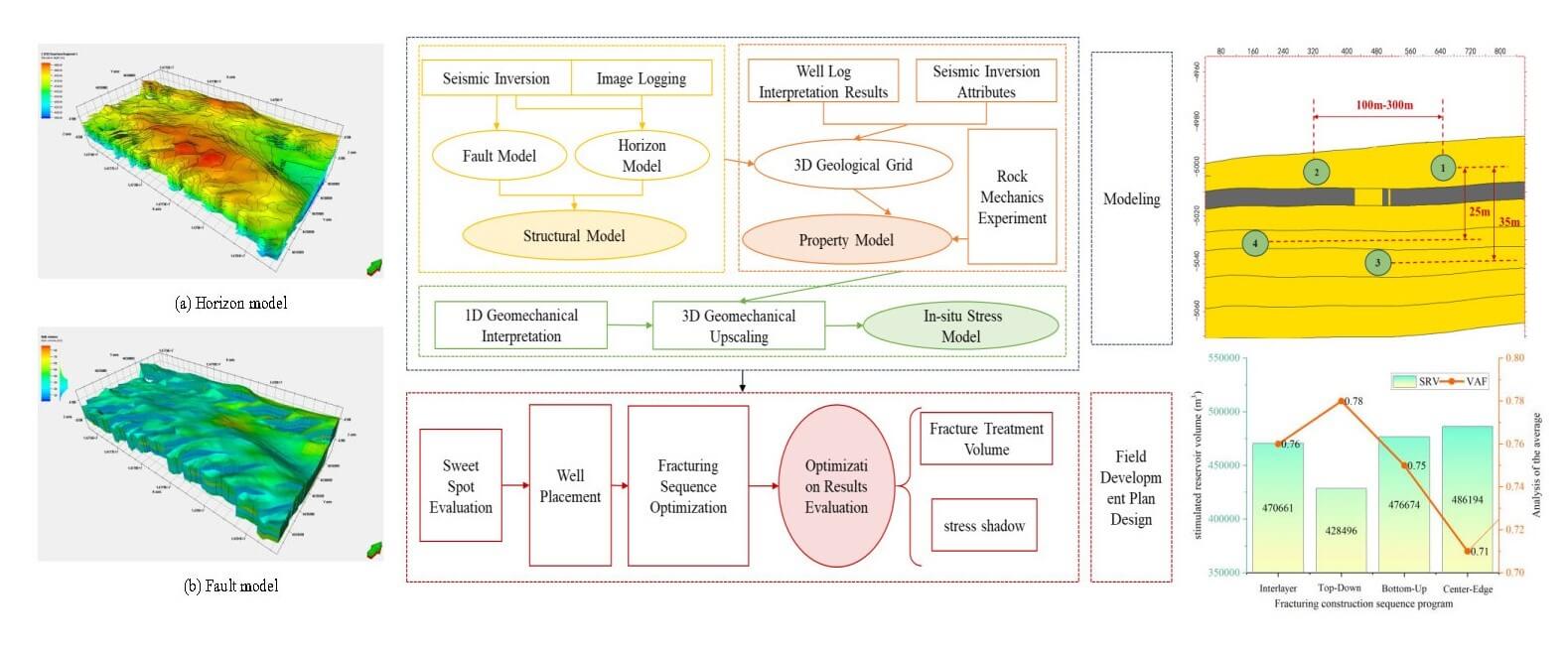 Open Access
Open Access
ARTICLE
The Hydraulic Fracturing Optimization for Stacked Tight Gas Reservoirs Using Multilayers and Multiwells Fracturing Strategies
1 School of Petroleum Engineering, China University of Petroleum (East China), Qingdao, 266580, China
2 State Key Laboratory of Deep Oil and Gas, China University of Petroleum (East China), Qingdao, 266580, China
3 Research Institute of Petroleum Engineering Technology Sinopec Northwest Oilfield Company, Urumqi, 830011, China
4 Reservoir Engineering Unit, Yuanwang Jingsheng Technology (Beijing) Co., Ltd., Beijing, 100083, China
* Corresponding Author: Xian Shi. Email:
(This article belongs to the Special Issue: Integrated Geology-Engineering Simulation and Optimizationfor Unconventional Oil and Gas Reservoirs)
Energy Engineering 2024, 121(12), 3667-3688. https://doi.org/10.32604/ee.2024.056266
Received 18 July 2024; Accepted 29 September 2024; Issue published 22 November 2024
Abstract
Based on a geology-engineering sweet spot evaluation, the high-quality reservoir zones and horizontal well landing points were determined. Subsequently, fracture propagation and production were simulated with a multilayer fracturing scenario. The optimal hydraulic fracturing strategy for the multilayer fracturing network was determined by introducing a vertical asymmetry factor. This strategy aimed to minimize stress shadowing effects in the vertical direction while maximizing the stimulated reservoir volume (SRV). The study found that the small vertical layer spacing of high-quality reservoirs and the presence of stress-masking layers (with a stress difference of approximately 3~8 MPa) indicate that interlayer stress interference from multilayers and multiwells fracturing between neighboring developed formations could affect the longitudinal propagation of the reservoirs. In addition, this study investigated well spacing optimization by comparing uniformly spaced wells (100–300 m) with asymmetric spaced wells (200 m upper layer, 250 m lower layer). Numerical results indicated that asymmetric spaced well placement yielded the largest stimulated reservoir volume (SRV) of 73,082 m3, representing a 65.42% increase compared to 100 m spaced wells. Furthermore, four different hydraulic fracturing sequences (interlayer, up-down, down-up, and center-edge) were compared for multilayer and multiwell networks. The center-edge sequence exhibited the lowest vertical asymmetry factor (0.71) and the least stress shadowing effects compared to the other sequences (0.78 for interlayer, 0.75 for up-down, and 0.76 for down-up). This sequence also achieved the largest SRV (486,194 m3), representing an 11.87% increase compared to the down-up sequence. Therefore, the center-edge fracturing sequence is recommended for multilayer development in this block. These results offer valuable insights for optimizing well placement and fracturing sequence design in multilayer well networks, ultimately advancing the development of multilayer fracturing technology in the region.Graphic Abstract

Keywords
Cite This Article
 Copyright © 2024 The Author(s). Published by Tech Science Press.
Copyright © 2024 The Author(s). Published by Tech Science Press.This work is licensed under a Creative Commons Attribution 4.0 International License , which permits unrestricted use, distribution, and reproduction in any medium, provided the original work is properly cited.


 Submit a Paper
Submit a Paper Propose a Special lssue
Propose a Special lssue View Full Text
View Full Text Download PDF
Download PDF Downloads
Downloads
 Citation Tools
Citation Tools